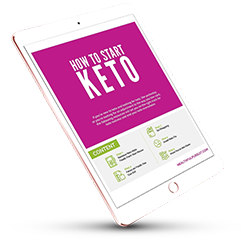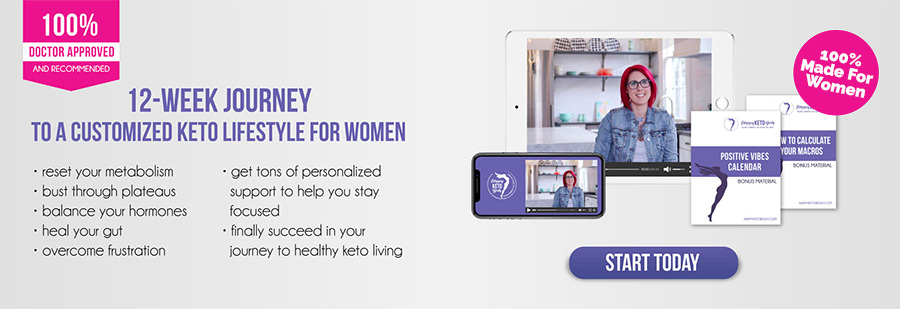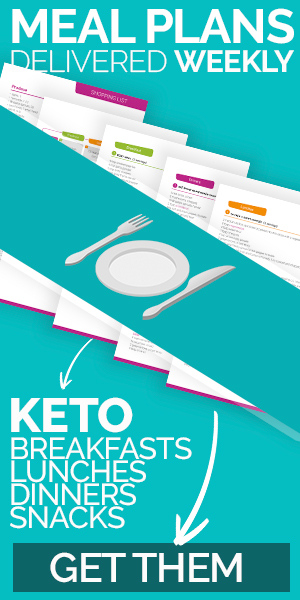I want...
How To Adapt To Ketosis Without The Keto Flu And Digestive Problems
November 6, 2022 By
Leanne Vogel

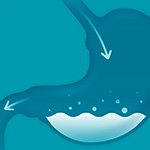 November 7, 2022
November 7, 2022
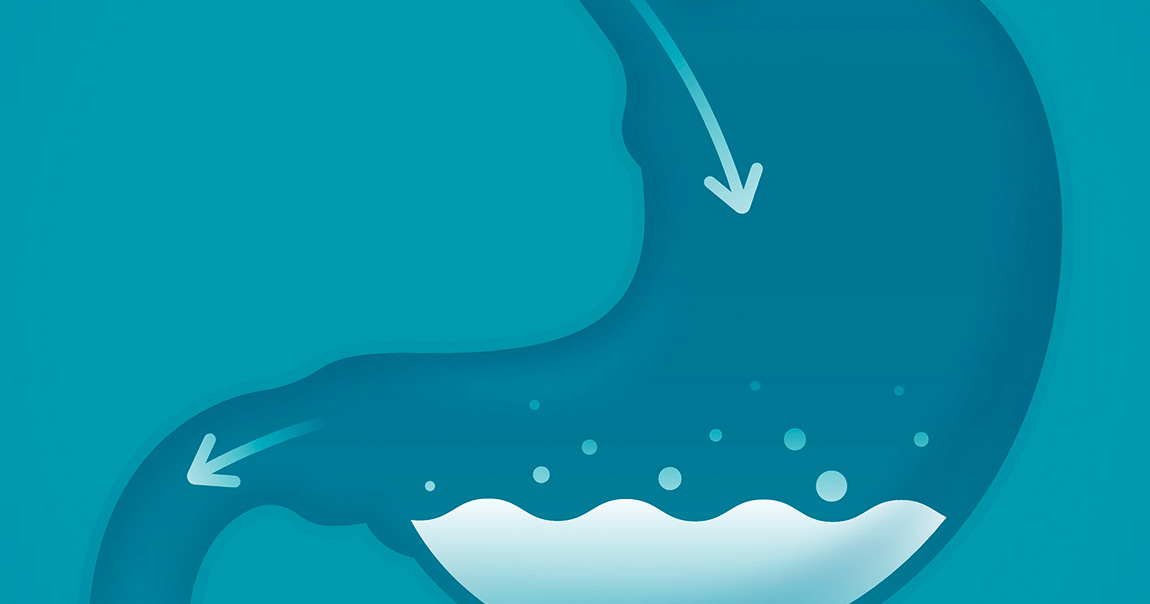
Keto has numerous benefits, such as blood sugar balance, weight loss, and better brain function. But unfortunately, many keto newbies struggle with digestive issues and keto flu as they try to enter ketosis. These are the first barriers keeping people from reaping the benefits of keto.
The good news is that you can overcome these struggles and still become keto-adapted and reap the benefits of ketosis. This article explains why you experience these symptoms when you first try to enter ketosis. Then, we’ll tell you the right and wrong ways to address them.
Keto shopping lists, recipes, and more! Start keto with this FREE 5-step guide.
I'm ready!What Happens In Your Body And Gut When You Try To Enter Ketosis?
Your body can normally regulate the amount of fat it burns, and it primarily depends on carbs for the energy it obtains through cellular respiration.
When there is a drastic decrease in calorie or carb intake, your body must find another fuel source.
First, the body uses carb stores (glycogen) in the liver and muscle cells as fuel. When your body uses up all the glycogen, you may feel “out of fuel.” Possible symptoms include:
- Fatigue
- Irritability
- Brain fog
- Headaches
- Nausea
- And sugar cravings
Also, if you’re active, you’ll notice a dramatic decline in exercise performance.
Why Keto Can Cause Digestive Problems, Especially At First
Initially, cutting out carbs and relying primarily on fats can be a shock to your digestive system and gut flora.
You need a lot more bile and lipase than ever before. Bile can accelerate gut movement and select certain strains of gut flora, while killing off others [R]. These changes can cause diarrhea or constipation, depending on your tendency. Bloating, heartburn, and nausea are also very common, especially in the beginning stages of keto.
After a while (about two weeks), your body starts to adjust and eventually transitions to ketones for energy. This means it builds more mitochondria, fat-burning, and ketone-producing enzymes inside your cells, especially in the liver. Concurrently, your gut can adapt to digesting more fats and staying regular, although many people need support for this gut transition.
Once your liver generates enough ketones to fuel your body and brain, your keto-adaptation symptoms will improve. Your body will start to burn fat as a primary source of energy. You’ll begin to feel more energized and have less cravings. You’ll be on your way to becoming fully keto-adapted, where you’ll get the most benefits from keto.
We have an article covering possible mistakes women make on a keto diet and how you can overcome keto flu. See here.
Poor digestion can ruin everything, including your ability to enter ketosis. So let’s talk about how to address the digestive problems that can arise from the ketogenic diet.
What Not To Do With Keto Digestive Problems
As a Keto Nutritionist, I’ve encountered a fair share of digestive struggles in my clients. But unfortunately, many of them either resort to unhealthy popular solutions, fail to address the root causes, or just outright don’t work.
1. Using Laxatives Or Coffee
Fiber feeds your good gut bacteria and is necessary for maintaining good bowel movements. Therefore, not getting enough fiber from keto-friendly foods, like non-starchy veggies, can cause constipation.
While over-the-counter laxatives may help alleviate the immediate challenge, they don’t address the root cause. For example, coffee and many of these laxatives force the gut to move or pull water into the gut. However, they don’t address the root cause of constipation, like the lack of fiber or other deeper causes. So, they can be habit-forming and that doesn’t help in the long run.
While dietary fiber supplements could be useful, many are high in sugars or carbohydrates that can kick you out of ketosis. So, you need to read the labels to ensure that they aren’t full of sugar. Most importantly, make sure they don’t contain gut-irritating ingredients that could worsen your gut or health.
2. Counting On Probiotics Alone
Probiotics have many undeniable benefits. Taking quality probiotics is one of the easiest and most effective ways to support your digestion and gut flora on a ketogenic diet.
Probiotics support digestive regularity. Some people find that they’re enough to normalize keto gut issues. However, in many other cases, they don’t address the root causes of the gut issues. So you need to dig a little deeper and may need to support your digestion in other ways.
3. Too Much Mct Oil, Exogenous Ketones, And Sugar Alcohols
MCT oil and exogenous ketones can help you shift into ketosis quickly. In addition, it can tide you over during the initial keto-adaptation phases by increasing your blood ketone bodies. Whereas, sugar alcohols are natural sweeteners that taste almost like sugar but don’t count toward your net carbs for the day.
A common cause of keto diarrhea is too much of these. And it’s possible to look everywhere else for the cause of your gut problems, especially if they can be lurking in keto muffins, cookies, bars, sauces, or even supplements.
So, you want to watch out for these on food labels if your gut is acting up. If you add them yourself, start very slowly and step up gradually. For example, begin with 1/4 teaspoon or scoop and gradually increase the quantity to see how much you can tolerate.
Keep in mind that when you take these on an empty stomach or with coffee, the loose stool effects may occur at a lower dose than when taken with food or without coffee.
Now that you know what not to do with keto digestive problems, let’s look at the right solutions to address them.
How To Address Digestive Problems Like Constipation, Diarrhea, And Stomach Cramps On Keto
1. Use Digestive Enzymes High In Lipase And Bile-Stimulating Bitters
The body has a harder time breaking down lipids (fats) than other nutrients. This may pose a challenge if your gut can’t catch up with producing enough lipase and bile to digest a high-fat meal. Supplementing with the right digestive enzymes can help with this.
The only digestive enzyme formulated for the ketogenic diet is kApex. It contains full-spectrum lipases and proteases, which work across all gut pH ranges, to help your gut fully break down fat and proteins.
Also, the dandelion root is a digestive bitter that stimulates healthy bile production and flow while supporting liver health and relieving nausea.
Aside from the digestive support, kApex also contains ingredients that help boost mitochondrial function and support ketogenesis from the fat you eat. That way, your keto-adaptation happens more smoothly and you feel more energized. It also promotes metabolism and gently supports physical performance, which can allow you to be more active on keto.
This makes it the best supplement to help you digest your keto meals and feel great on the ketogenic diet, especially in the beginning.
2. Use Betaine HCL
Stomach acidity is important for healthy gut movement, smooth digestion, and natural bile secretion. Bloating, stomach heaviness, and heartburn are signs of low stomach acid that tend to worsen with high-fat meals. HCL Breakthrough is perfect because it provides acid and digestive enzymes that work best in acidic pH.
3. Start Out Doing Keto As Clean As Possible
Clean means whole, natural, and recognizable from its original form, e.g. meats and vegetables. Some people with major sugar addictions may want to avoid all sweeteners (natural or artificial) during this period.
Processed keto foods, especially brownies and candies, tend to come with sugar alcohols that can cause loose stools. They may also contain gut irritants like gluten or dairy, which can increase inflammation and make you feel worse. In some cases, the inflammation keeps blood sugar high, making it hard to enter or stay in ketosis [R].
4. Watch Out For Keto-Compliant Ingredients That Can Cause Loose Stools
MCT oils, exogenous ketones, and sugar alcohols can cause loose stools, especially when mixed with high-fat meals and coffee. If you get diarrhea, you want to remove these until your gut recovers. Then, try to figure out what small doses you can tolerate.
Natural sweeteners, such as stevia and monk fruit, don’t cause loose stools on their own, but many supermarket stevia and monk fruit powders and liquids come with some sugar alcohols in them. So, you want to read the labels to ensure you’re not accidentally eating too much sugar alcohol in one sitting.
5. Remember To Include Vegetables
Generally, those who follow a low-carb diet tend to eat too little fiber, as many high-fiber foods contain high carbohydrate levels. But it’s still important to incorporate fiber into your diet, as not eating enough may lead to constipation or other digestive problems.
Consuming enough fiber will help you maintain a healthy gut and feed your good gut bacteria. [R] Vegetables are an excellent natural fiber source, and including them in your diet is an excellent way to boost your fiber levels. They are also low on the glycemic index so they don’t tend to raise your blood sugar.[R]
Leafy green vegetables like spinach and kale are rich in fiber which can help add volume to your stool, making it easier to pass. This reduces the likelihood of constipation. If you have the tendency for diarrhea, the fiber helps bulk up the stool and improve its consistency.
6. Drink Plenty Of Water And Electrolytes
When your body moves to ketosis, it can use up the glycogen stores (stored carbs in your liver and muscles). And since glycogen is stored with water molecules, a depletion will cause you to lose water through your urine which contains electrolytes. [R]
Also, the kidney starts to dump sodium rapidly due to a fall in insulin and aldosterone levels. This can lead to a sodium deficit which can cause various “keto flu” symptoms. So, you need to consume a lot more salt and electrolytes to prevent deficiency symptoms.
Remember to drink enough water (aim for close to a gallon per day) and make sure you eat electrolyte-rich whole foods. Also, supplement with a lot of salt and electrolytes.
7. Use Synbiotics To Support The Gut Flora To Transition
When you switch diets, some of your gut bacteria die off. This can worsen the keto flu. Biome Breakthrough is the best solution because IgYmax can bind the components of bacteria that die, preventing many die-off symptoms. IgYmax also seems to balance the inflammatory response at the gut barrier, making it even more hospitable to the healthy gut flora [R].
It also has synbiotics (pro+prebiotics) that support healthy gut flora and gut barrier. High-fat meals can open up the gut barrier and allow some bacterial toxins from bad bacteria through, which contributes to the keto flu and digestive problems [R].
When the good bacteria ferment the beneficial fiber in Biome Breakthrough, they produce the postbiotics that help reseal the gut barrier. Also, Lactobacillus gasseri, one of the probiotic strains in Biome Breakthrough, is clinically proven to help with weight [R, R].
8. Move, But Take It Easy
Incorporating some movements into your day for keto adaptation and your gut is important. But don’t expect the same performance as before for a few months. kApex also has mitochondria-boosting ingredients that improve energy and physical performance.
Summary
You can reap the benefits of keto with minimal keto flu and digestive symptoms. To transition into ketosis smoothly, I recommend trying kApex, HCl Breakthrough, and Biome Breakthrough.
You May Also Like...
Hi! I'm Leanne (RHN FBCS)
a Functional Medicine Practitioner, host of the Healthful Pursuit Podcast, and best-selling author of The Keto Diet & Keto for Women. I want to live in a world where every woman has access to knowledge to better her health.
